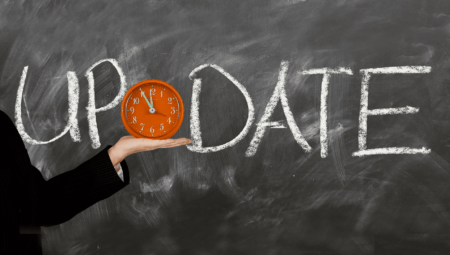New Version Numbering System for MailStore Products
 This is to let you know about a change concerning the way we want to number future versions of our MailStore products.
This is to let you know about a change concerning the way we want to number future versions of our MailStore products.
So, as of the next product release, the version number will reflect the time of the release. The version number will be given the format YY.Q, where YY stands for the year and Q for the quarter of the release (e.g. 22.1 for the first quarter of 2022). This new system corresponds to the system already in use by our parent company, OpenText, and will enable us to standardize and simplify the release structure.
Below you will find a list of frequently asked questions (FAQs) about the change. Did the FAQs answer all your questions? If not, feel free to contact us.
FAQs
-
What’s changing?
We’re standardizing the version numbers of our products to reflect the quarter in which the product was released. The only exception will be hotfix versions, for which only the release number of the previous version is incremented.
Example: Version 22.1 is released in the first quarter of 2022. The next release is a hotfix and will take place in the second quarter. Then the hotfix version has the version number 22.1.1.
-
What will the version numbers look like in the future?
The full version number will appear thus: <YY.Q.N.BBBBB>, where
YY is the 2-digit year,
Q is the quarter,
N is the release number in the respective quarter, beginning with 0, and
BBBBB is the build number of the release.For example: 22.1.0.12345 would be the first release in the first quarter of 2022 with build number 12345.
-
Why are we changing the numbering system?
The new system will follow the scheme that applies to all products of our parent company, OpenText. The aim is to standardize and simplify the release structure.
-
How will I be able to distinguish between a major release / new feature / bug fix release after the change? What new features / improvements / fixes does the version include?
We will no longer be using version numbers to distinguish between individual release types. The only exception are hotfix releases, for which the release number of the previous version is incremented (example: the previous version has the version number 22.1 and the following hotfix gets the version number 22.1.1). As usual, the changelogs will show any improvements contained in the release. Critical fixes, e.g., security vulnerabilities, will be referred to separately.
-
What if a hotfix needs to be released only for a certain product?
In this case, only this product will be released with its corresponding version number. All other products will skip this version number.
-
When does the change come into effect?
The change will come into effect with the next release, probably in the first quarter of 2022.
-
Will there be a release every quarter?
That is our aim, but we can’t guarantee at the moment that this will be the case.
-
What happens if there’s no release in a given quarter?
In that case, the release version will be skipped and will continue with the next quarterly release, so release 22.1 will be followed by 22.3, for example.
-
What happens if there are several releases in a given quarter?
In that case, the release numbers will be incremented accordingly during the quarter, e.g. 22.1.0, 22.1.1, etc.
-
Will the new numbering system affect MailStore Server’s Update & Support Service (USS)?
No, the USS will not be affected by the change. As before, whether a version can be installed or not will depend solely on whether it was released during the term of the USS.
-
Why the big jump in versions from 13.x to 22.x?
Up to now, the major version numbers of our products have been incremented in linear fashion. In future, the first two digits of the version number will indicate the calendar year of the release.
-
Do client components such as the MailStore Outlook Add-in or the MailStore Client Launcher need to be updated just because of the jump in versions?
The jump on its own does not mean that these client components will need to be updated. Otherwise, please refer to the update notes as usual to see whether an update is required for technical reasons.
-
Will an update to version 22.x have to be carried out solely on account of the new version numbering system?
Although the new numbering system doesn’t force an update per se, we generally recommend using the latest version of our products, especially since this is a requirement for receiving technical support.
-
Will the new version numbering system be mentioned in the changelog and the update notes?
Yes, appropriate reference will be made in the changelog and update notes.







